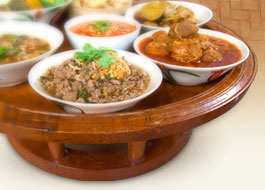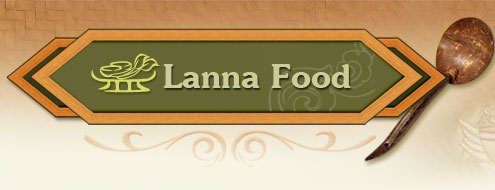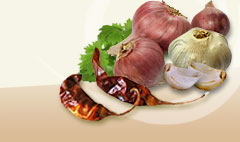Lemon-scented basil |
|
|
 | Ocimum americanum |
|
| |
 | Labiatae |
|
| |
 | Lemon-scented basil, Hairy basil, Hoary basil |
|
| |
 | Kom ko khao (Northern) (Rattana Phromphichai, 1999, p. 194), mang lak (Wut Wuthithamwet, 1997, p. 374), phak i-tu (Loei) (Kanchana Diwiset, et al., comp., 1999, p. 227) |
|
| |
 | Annual cultivated herb similar to holy basil, 2-3 ft high. Stem quadrangular, branched, hard stalk. Leaves simple opposite decussate, lanceolate to elliptic, light green, with soft hair, fragrant. Inflorescence of racemes, terminal, corolla of the flowers bilabiate, white. Fruit small, dark brown, nutlets ovoid, 4 seeds. (Kanchana Diwiset, et al., comp., 1999, p. 227) |
|
| |
 |

Carbohydrates, fiber, protein, calcium, phosphotus, iron Vitamins A, B2, C, Beta-carotene. (Phak Phuen Ban Ahan Phuen Mueang, 2005, 75)
Food: This plant is used to enhance the odor of several kinds of dishes like kaeng liang, soup as well as sauce, or made into a drink, or eaten raw with noodle dishes of nam ya or namphrik. Seeds are soaked in water until they swell fully and then put on a dessert toped with ice and syrup. Caution when eating seeds: Eating dry seeds can cause them to swell in the intestine resulting in severe constipation. If taking them for weight reduction or slimming down, it should not be a substitute for a meal or excessive intake can produce a stuffy feeling. (Phennapha Sapcharoen and Kanchana Diwiset eds., 1999, pp.185-187)
|

The leaf is used for medicine to treat intestinal problems, to stimulate passing of wind in the intestine and relieve dizziness. (Wut Wuthithamwet, 1997, 374) It is used as a health tonic and to ward off colds and a childs bronchial infection. (Phennapha Sapcharoen and Kanchana Diwiset, eds., 1999, p. 184)
Seeds are soaked in water until completely swollen to serve with syrup as a dessert, good as a laxative and stops dysentery. (Wut Wuthithamwet, 1997, p. 374)
All parts can be used to encourage passing wind, sweating, stop cough and relieve problems with the digestive system. (Phennapha Sapcharoen and Kanchana Diwiset, eds., 1999, p. 184)
In Lanna Pharmaceutics the root is an ingredient in medicine to clear up bleeding wounds, used as a diuretic, to treat leprosy, hiccought, infections in the urinary system. (Rattana Phromphichai, 1999, p. 195)
|
|
| |
 | All year round |
|
| |
 | Phak Phuen Ban Ahan Phuen Mueang. (2007). Bangkok: Fa Aphai Co., Ltd. Rattana Phromphichai. (1999). Kom Ko/Kom Ko Dam. inSaranukrom Wattanatham Thai Phak Nuea (Vol. 1,pp. 194-195). Bangkok:Siam Commercial Bank Foundation for the Encyclopedia of Thai Culture. Wut Wuthithamwet. (1997). Saranukrom Samunphrai: Ruam Lak Phesatchakam Thai. Bangkok: Odeon Store. |
|
| |
|
|




